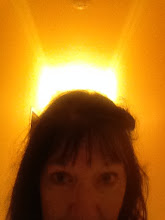Yes, now I remember, I said. We saw Hume's Mirror at the Samstag Museum on the weekend. But you weren't there Pliny, how do you know about it?
I clicked on a Facebook link to it, said Pliny, and watched the video.
So you saw the mirror?
Yes, I saw it. It was a plain mirror in a frame with 'No object implies the existence of any other' printed in large letters across the central part of the mirror.
And you took it at face value, did you?
Should I not have?
No. Don't you think the artist was being ironic? Showing up a flaw in Hume's argument? Because what does a mirror do if not imply the existence of the person who's looking into it?
That, said Pliny, is a very shallow way of seeing it. Because Hume's argument is that it is only by experience, that is, memory, that we can infer the existence of one object from that of another.
How come you're so well up on it? I asked tetchily.
Pliny looked wise.
So, I said, what you're saying, and what Hume's saying, is that you can only infer your own existence by seeing yourself in the mirror if you remember what you look like.
Exactly, said Pliny. If you'd never seen yourself before, you wouldn't know it was you in the mirror.
But you would if the person in the mirror had the same clothes on as you, I said. Because you could see your clothes and the clothes of the reflected person at exactly the same time. If you both had the same orange jumper on, with a zipper, and balls of fluff stuck to the sleeves, and a bit of egg on the front, you could be absolutely certain it was you in the mirror.
No, said Pliny. You couldn't. You could only say you were seeing a reflection of a person who may or may not be you, because you don't know what you look like, and who is wearing clothes that look like yours but are the right way up, whereas yours when you look down at yourself are upside down
Oh, I said, looking down at myself. You're right.
Subscribe to:
Post Comments (Atom)

No comments:
Post a Comment